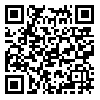جستجو در:
دوره 3، شماره 2 - ( 2-1400 )
جلد 3 شماره 2 صفحات 15-8 |
برگشت به فهرست نسخه ها
Download citation:
BibTeX | RIS | EndNote | Medlars | ProCite | Reference Manager | RefWorks
Send citation to:



BibTeX | RIS | EndNote | Medlars | ProCite | Reference Manager | RefWorks
Send citation to:
Ranjbar Z, Etemad S M K. Investigating the Effect of Monetary Shock on the Activity Level of Industrial Units in Iran Using the FAVAR Model. sjamao 2021; 3 (2) :8-15
URL: http://sjamao.srpub.org/article-7-108-fa.html
URL: http://sjamao.srpub.org/article-7-108-fa.html
رنجبر زهرا، اعتماد سید محمد کاظم. بررسی اثر شوک پولی بر سطح فعالیت واحدهای صنعتی در ایران با استفاده از مدل FAVAR. نشریه مدیریت کاربردی و چابک سازی سازمانی. 1400; 3 (2) :8-15
استادیار ، گروه مهندسی صنایع ، دانشکده فنی و مهندسی ، موسسه آموزش عالی زند شیراز ، شیراز ، ایران
چکیده: (2252 مشاهده)
امروزه رشد و توسعه اقتصادی بدون توجه به بخش صنعت امکانپذیر نیست. صنعت از جمله بخشهای زیربنایی اقتصاد است که نقش مهمی در تعیین چرخههای رونق و رکود ایفا مینماید. همچنین سیاستهای پولی از مهمترین سیاستهای کلان اقتصادی کشور بوده که باتوجه به اهمیت بخش صنعت در اقتصاد ایران و ضرورت اتخاذ سیاستهای پولی مناسب، این مطالعه سعی دارد که با هدف بررسی تاثیر شوکهای پولی شامل شوک نقدینگی و شوک پایه پولی بر سطح فعالیت واحدهای صنعتی کشور، این موضوع را بررسی نماید. بدین منظور از دادههای آماری از سال ۱۳۵۷ تا ۱۳۹۵ و یک مدل خودرگرسیون برداری عامل تعمیم یافته جهت تعیین روابط و تاثیرات شوکهای وارده و تجزیه و تحلیل آنها استفاده شده است. یافتههای تحقیق حاکی از آن است که یک شوک پولی مثبت (افزایش حجم پول) اثرات انبساطی بر رشد تعداد صنایع کشور و سرمایهگذاری این صنایع در اقتصاد ایران دارد. همچنین تعداد صنایع و سرمایهگذاری آنها نسبت به شوک نقدینگی، دارای یک واکنش سریعتر و پایدارتر نسبت به شوک پایه پولی میباشد.
نوع مطالعه: پژوهشي |
موضوع مقاله:
اقتصاد صنعتی
دریافت: 1399/11/27 | ویرایش نهایی: 1399/12/27 | پذیرش: 1400/1/10 | انتشار: 1400/2/10
دریافت: 1399/11/27 | ویرایش نهایی: 1399/12/27 | پذیرش: 1400/1/10 | انتشار: 1400/2/10
فهرست منابع
1. Sims CA. Macroeconomics and reality. J Economet Soc. 1980; 48(1): 1-48. [DOI:10.2307/1912017]
2. Hsing Y. Responces of argentine output to shocks to monetary policy, fiscal policy and exchange rates: A VAR Model. Appl Economet Int Dev. 2004; 4(1): 1-16.
3. Bernanke BS, Boivin J, Eliasz P. Measuring the effects of monetary policy: A factor-augmented vector autoregressive (FAVAR) approach. Q J Econ. 2005; 120(1): 387-422.
https://doi.org/10.1162/qjec.2005.120.1.387 [DOI:10.1162/0033553053327452]
4. Marzban H, Dehghan Z, Akbarian R, Farahani M. Assessing the effectiveness of monetary policy on the economy: FAVAR approach. J Quant Econ (Q J Econ Rev), 2016; 13(2): 71-92.
5. Bernanke B, Boivin J. Monetary policy in a data-rich environment. J Monetary Econ. 2003; 50(3): 525-546. [DOI:10.1016/S0304-3932(03)00024-2]
6. Bernanke B, Blinder A. The federal funds rate and the channels of monetary transmission. Natl Bureau Econ Res. 1990; 82(4): 901-958. [DOI:10.3386/w3487]
7. Boivin J, Kiely M, Mishkin FS. How has the monetaryv transmission mechanism evolved over time?. Handbook Monetary Econ. 2010; 3(1): 369-422. [DOI:10.1016/B978-0-444-53238-1.00008-9]
8. Lutkepohl H. Introduction to Multiple Time Series Analysis. New York, Springer Verlag. 1991. [DOI:10.1007/978-3-662-02691-5]
9. Urzua CM. Omnibus tests for multivariate normality based on a class of maximum entropy distributions. Adv Economet. 1997; 12(1): 341-358. [DOI:10.1108/S0731-9053(1997)0000012016]
ارسال پیام به نویسنده مسئول
| بازنشر اطلاعات | |
 |
این مقاله تحت شرایط Creative Commons Attribution-NonCommercial 4.0 International License قابل بازنشر است. |










